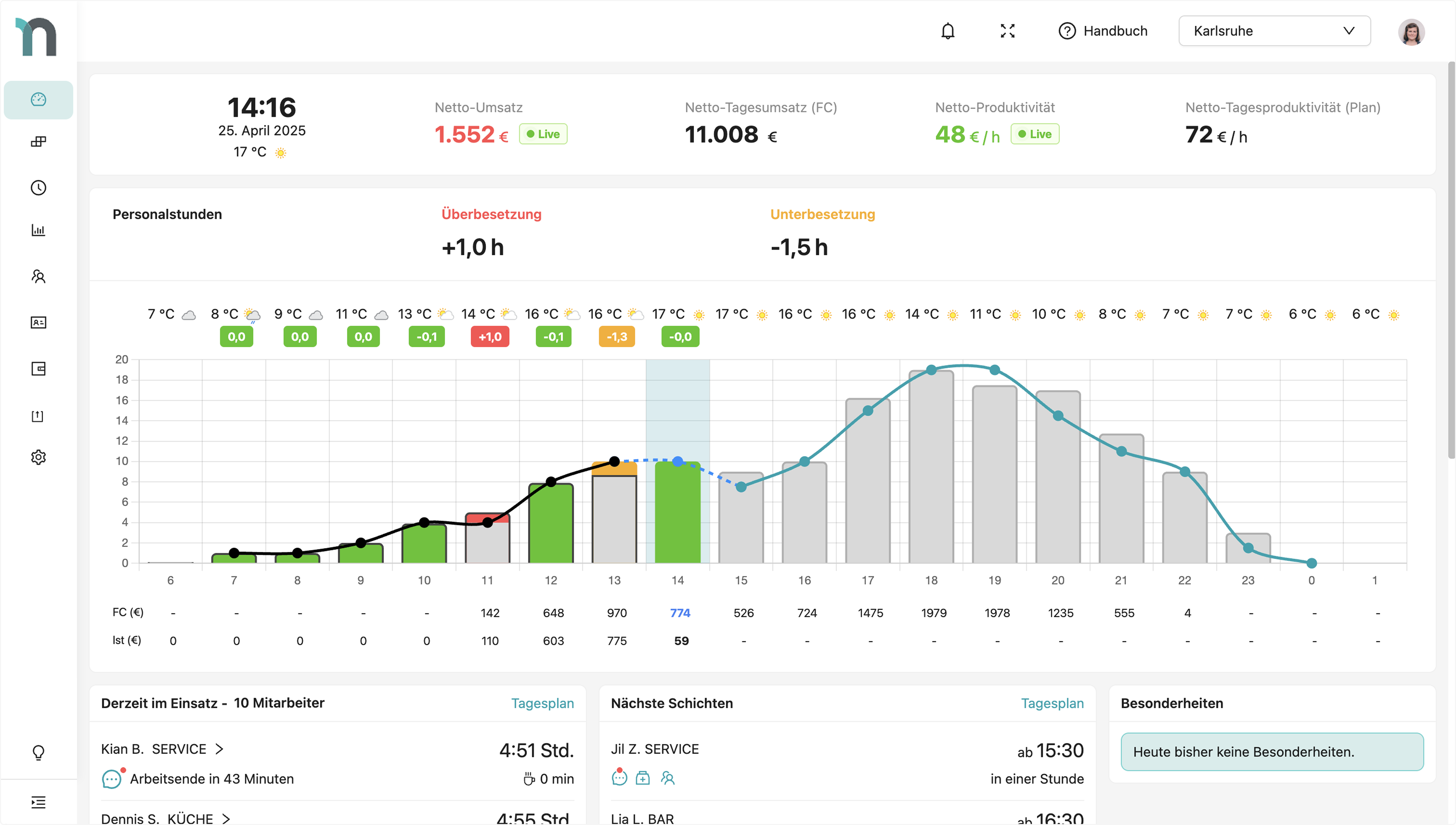Rethinking Strategic Workforce Planning
How a Capability Model is Transforming Shift Scheduling in the Hospitality Industry
Why Shift Scheduling Must Become a Leadership Task
Digital transformation has significantly reshaped industries ranging from manufacturing to retail. However, the hospitality sector has long remained on the sidelines. Complex operations, tight margins, and a high proportion of manual work have led to delayed digitization efforts—often limited to cash register systems or reservation platforms. But that time is over.
With rising costs, increasing competitive pressure, and ongoing labor shortages, it’s become clear that hospitality businesses must rethink their internal processes. At the heart of this transformation is shift planning.
Shift Planning as a Strategic Management Lever
What is often viewed in day-to-day operations as a logistical necessity is, in fact, a critical driver of value creation. Shift planning isn’t just a tedious task—it is a strategic business capability closely tied to key areas such as cost control, revenue forecasting, service quality, and employee motivation.
Despite its importance, shift planning is still often overlooked. The reason typically lies in its lack of systemic integration:
- No interfaces with revenue or guest frequency data
- Employee availability and qualifications are not systematically considered
- Gaps between planning and actual operations lead to reduced productivity and dissatisfaction
 Illustration: Nesto Software
Illustration: Nesto Software
A New Perspective: From Excel Schedules to Integrated Planning
A modern understanding of workforce planning goes far beyond weekly schedules pinned to the wall. It connects operational needs with business objectives and uses available data to inform decisions.
A strategically designed shift plan considers:
- Revenue and guest traffic forecasts
- Legal and collective agreement requirements
- Employee preferences and workload limits
- Skill requirements for each shift or task
- Impact on overall cost structure
Modern Shift Planning Systems in Practice
Today’s workforce planning solutions offer much more than basic shift scheduling. They combine analytics, automation, and usability in a single system.
Based on historical revenue and guest data, accurate forecasts can be generated, enabling demand-driven shift planning. A fully automated schedule is then created that meets both legal requirements and individual availability.
A centralized dashboard displays key metrics such as labor costs, capacity utilization, and deviations from plan. Employees receive all relevant shift information via a dedicated app, including:
- Shift overviews
- Change notifications
- Digital time tracking
The result is a transparent solution that noticeably simplifies planning and communication.
Our Approach: A Capability Model for the Hospitality Sector
To support companies on this journey, we’ve developed a dedicated Capability Model for the hospitality industry.
It organizes the key management functions of a hospitality business and reveals how operational processes are linked to strategic planning.
At its core is the realization that shift planning is not an isolated administrative task, but a connected leadership responsibility.
It is comparable to managing inventory levels or pricing strategies. Shift planning plays a decisive role in how efficiently a business operates, how well teams collaborate, and how attractive the company is as an employer.
Conclusion: Rethinking Shift Planning
Companies that continue to treat shift planning as a purely operational task miss important opportunities for efficiency and employee engagement.
It’s time to recognize it for what it is—a strategic management function with measurable impact on business performance.
The digital transformation of the hospitality industry doesn’t end at the point of sale—it begins where key decisions are made. And one of the most important decisions is: who works when and why?
Want to explore the full Capability Model for the Hospitality Sector?
Request the complete model overview and book a 1:1 session with us to explore how you can unlock targeted potential in your operations.
If you’re interested in reading more, check out our FinOps introduction guide.
We’d love to hear about your current challenges and plans related to FinOps and cost optimization.

Kai Herings
Senior consultant
Optimize alignment between IT and business with expert advice and clear strategies.
